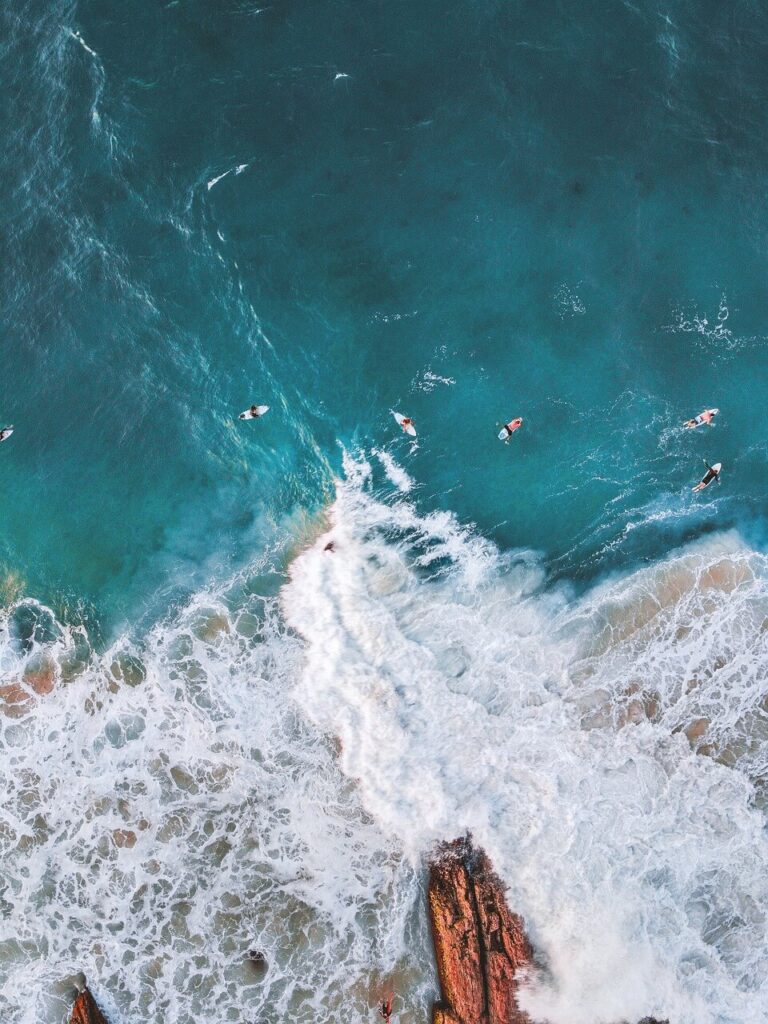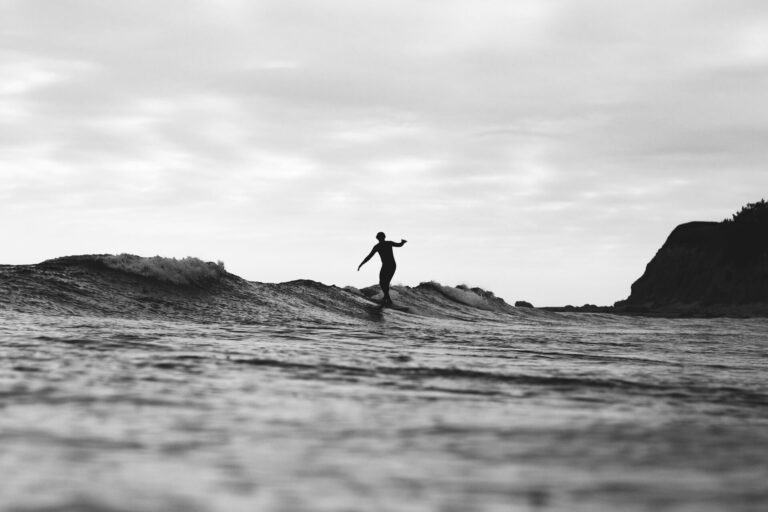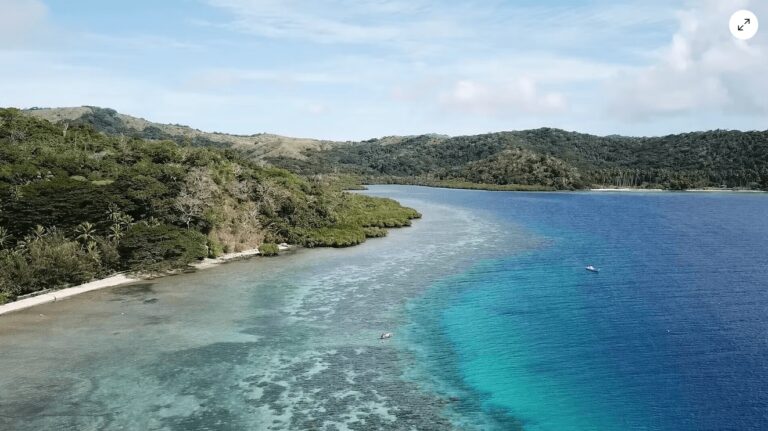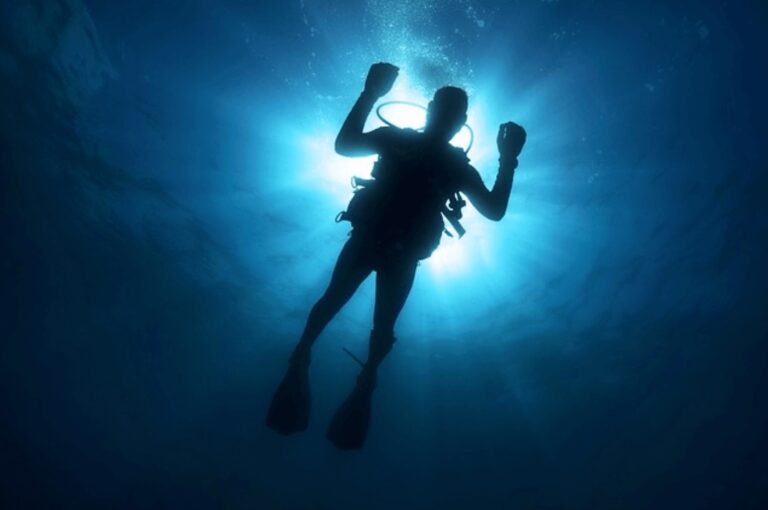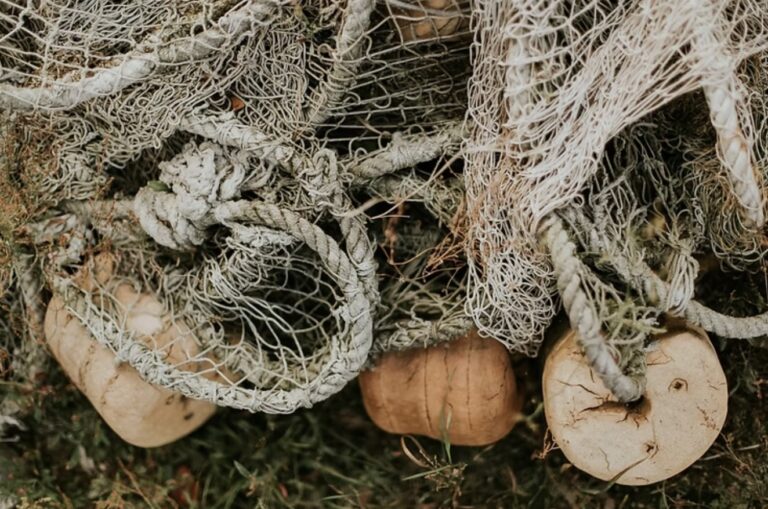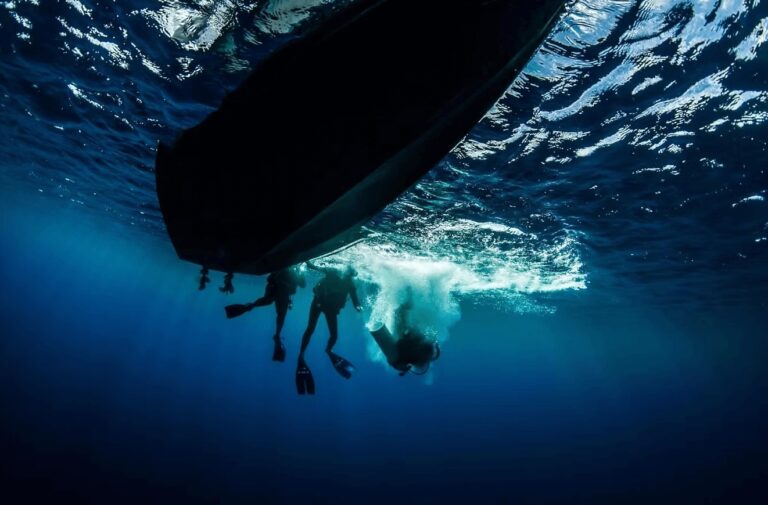Mercury pollution in the ocean and its impacts on marine life
Mercury pollution in the ocean poses a serious threat to marine life and human health. How does it end up in our waterways and what is being done to address this serious marine conservation issue?
Toxic to humans and the environment, mercury is a heavy metal that is continuously circulating through the atmosphere, water and soil in various chemical forms.
When mercury is released in one part of the world, it can impact far-distant regions, as well as the humans and animals that live there.
One of the most concerning environments impacted by this global mercury cycle is the ocean. Our oceans can act as a vast “storage closet” for mercury, accumulating massive quantities of this toxic substance.
Recent modelling estimates suggest that total anthropogenic mercury released into the oceans amounts to between 80,000 and 450,000 metric tons. Two-thirds of this mercury is found in the upper ocean layers where many commercially important fish species live.
This mercury can then bioaccumulate up the marine food chain in the form of highly toxic methylmercury. Unfortunately, this can put human seafood consumers at serious health risk.
The natural mercury cycle poses a significant global challenge, as mercury released in one part of the world can impact regions thousands of kilometres away.
Given that the oceans provide around 66% of the global fish supply, monitoring and regulating oceanic mercury levels is absolutely critical to preventing further mercury from entering the human population through seafood consumption.
In this article, we’ll explain the sources of mercury pollution in our oceans and the impacts this heavy metal is having on marine life and human health. We’ll also touch on some of the ways we can reduce the amount of mercury entering our oceans and innovative technologies being used in the clean-up process.
For more insights into marine conservation issues, check out our collection of articles here. They focus on everything from ocean acidification and microplastics to coral bleaching and the Great Pacific Garbage Patch.
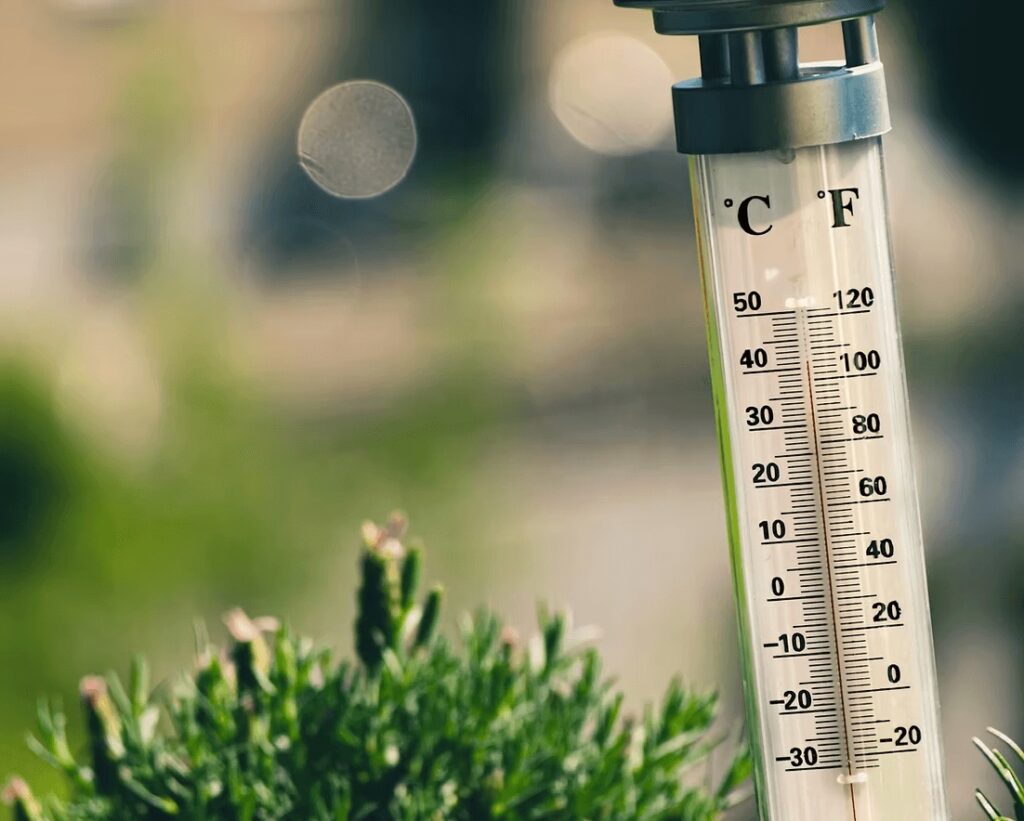
Sources of mercury pollution
Mercury is released into the environment through a variety of natural and human-caused processes. Naturally, mercury is released from the Earth’s crust and underground reservoirs during volcanic eruptions and other geologic events.
Volcanoes can expel mercury that has been trapped deep underground. Meanwhile, the weathering and erosion of mercury-containing rocks and minerals allow the element to be gradually released into soils and waterways, often in the form of salts.
These natural sources account for a portion of the mercury present in the environment. But human activities have dramatically increased mercury levels over the past century.
The primary anthropogenic (or human-generated) sources of mercury emissions include small-scale gold mining, the burning of fossil fuels and the production of non-ferrous metals like copper and zinc.
Mining operations, power plants and industrial facilities release mercury that has been trapped in the Earth’s crust. Meanwhile, consumer products, waste and contaminated sites also contribute to environmental mercury levels.
Estimates suggest that since the Industrial Revolution, human-caused mercury emissions have tripled the overall concentration in the environment.
Once released, mercury can enter the ocean through several different means, the largest of which is atmospheric deposition. During this process, gaseous, inorganic and particle-bound forms of the element are transported and deposited in marine environments.
Rivers, estuaries, sediments and hydrothermal vents also transport mercury into the oceans. Additionally, there is evidence that it is being leached from sunken submarines around the globe.
Cases like the sinking of the German submarine U-864 in 1945, which released 67 tons of mercury cargo, demonstrate how mercury contamination can create long-term environmental problems in ocean ecosystems.

The impacts of mercury pollution on marine life
When it comes to marine life, the release of mercury into our oceans can have devastating consequences that reverberate up the food chain. Not surprisingly, the most vulnerable predators at the top bear the brunt of the contamination.
Once in the marine environment, this heavy metal can be converted into an even more toxic form known as methylmercury, which is readily absorbed by marine organisms.
This organic form of mercury is particularly concerning as it can bioaccumulate up the food chain. As such, it poses risks to marine life and human consumers of seafood.
As creatures like plankton and small fish consume methylmercury-contaminated food, the toxin accumulates in their bodies. This process of bioaccumulation then continues as larger predators higher up the food web consume these smaller, mercury-laden organisms.
The result is a phenomenon called biomagnification, where the concentration of mercury increases at each successive trophic level.
This poses a threat to marine mammals such as dolphins, whales and seals, which sit at the top of the oceanic food chain. These animals can accumulate extremely high levels of mercury in their bodies, leading to devastating health effects. These may include reproductive failure, behavioural changes and even death.
Similarly, large predatory fish like tuna and swordfish are also highly vulnerable to mercury contamination. In these marine animals, it can cause developmental abnormalities, reduced reproductive success and impaired growth.
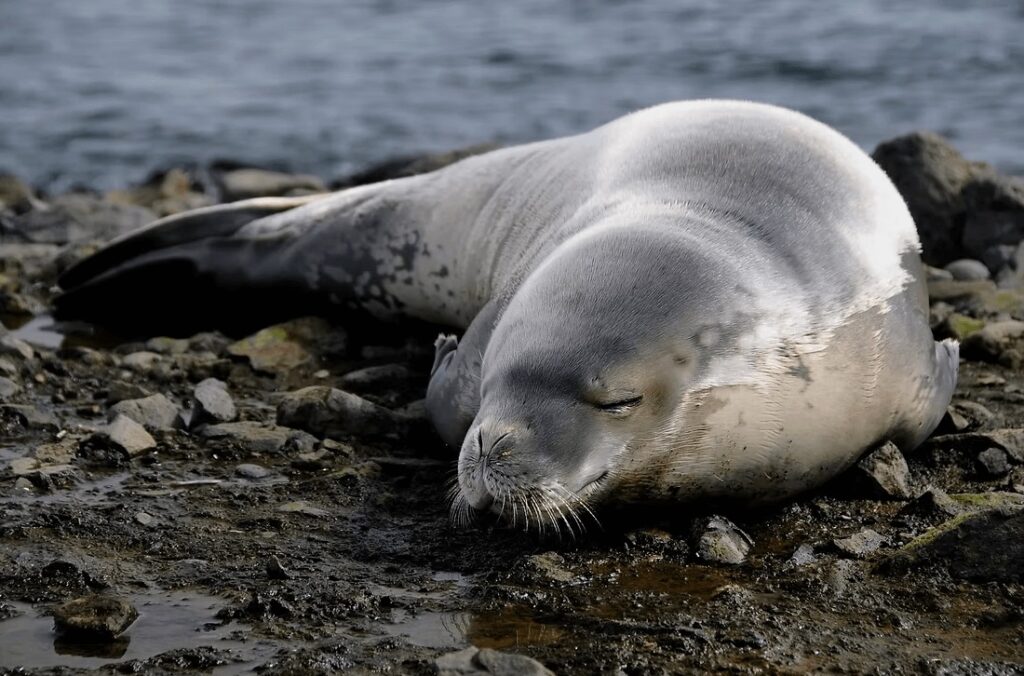
The impacts of mercury pollution on human health
The implications of oceanic mercury pollution extend beyond just marine wildlife. Humans who consume contaminated seafood can also be exposed to methylmercury.
Consuming mercury can have devastating effects on people of all ages. It can lead to a loss of peripheral vision, weakened muscles, impaired hearing and speech, as well as neurological damage, deteriorated movement coordination and cardiovascular disease.
However, the risks are particularly dire for infants and developing children. This is because their brains and nervous systems are still in the crucial stages of growth and maturation.
Exposure to mercury during these formative years can severely inhibit proper brain development. It can also damage memory, cognitive thinking, language abilities, attention and fine motor skills.
The tragic case of Minamata disease in Japan’s Minamata Bay in the 1950s provided a harrowing example of the consequences of extreme mercury exposure. Adult patients experienced symptoms like excessive salivation, limb deformities and irreversible speech and intelligence impairments.
In children and fetuses exposed to mercury through their mothers’ consumption of contaminated seafood, the effects were even more severe. Extensive brain lesions, cerebral palsy and the persistence of primitive reflexes (involuntary movements) were all observed.
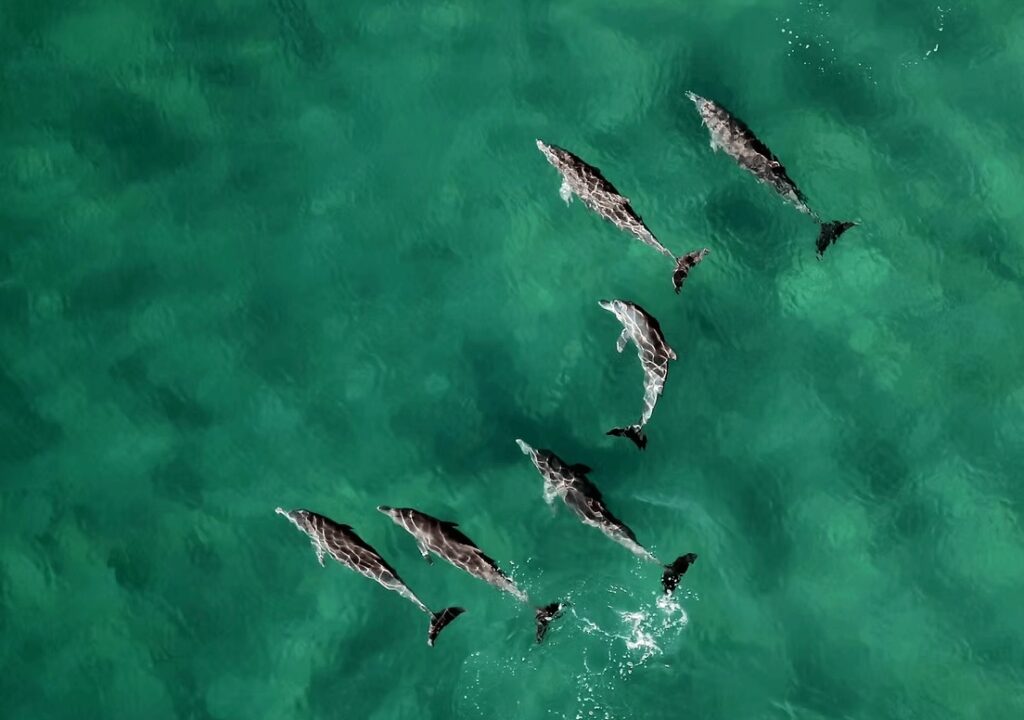
Cleaning up and preventing mercury pollution in our oceans
Reducing mercury emissions is a huge challenge that requires a comprehensive, long-term approach on several fronts. Beyond the shift towards cleaner energy sources like renewable power over coal, it’s vital that we curb small-scale artisanal gold mining, which is a major source of mercury release.
Proper treatment and disposal of industrial mercury waste is also critical to prevent it from contaminating the environment. Additionally, implementing effective policies and regulations to monitor and enforce these practices is absolutely necessary.
One of the most exciting advancements in cleaning up mercury pollution has taken inspiration from nature. It has long been observed that coral reefs have the capacity to sequester heavy metal ions. This is a phenomenon that scientists have now sought to replicate and harness through cutting-edge nanotechnology.
By synthesising “synthetic corals” at the nanoscale, researchers have developed a highly efficient means of extracting and removing mercury from contaminated water bodies, such as oceans and rivers.
Integral to this large-scale plan to curb mercury pollution are public awareness and individual action. Educating the public on the dangers and empowering them to make eco-conscious choices is paramount.
Simple steps like properly disposing of mercury-containing items like medical packaging and old thermometers can make a substantial difference. So too can switching to mercury-free light bulbs/batteries and choosing consumer products with minimal mercury emissions.
Collectively, these measures can help recover damaged ecosystems and minimise the long-term legacy of mercury pollution in our oceans for future generations.
The global nature of the mercury cycle means that no region or nation can afford to ignore this pressing environmental threat. International cooperation and decisive action are essential to mitigate what is a far-reaching environmental issue.
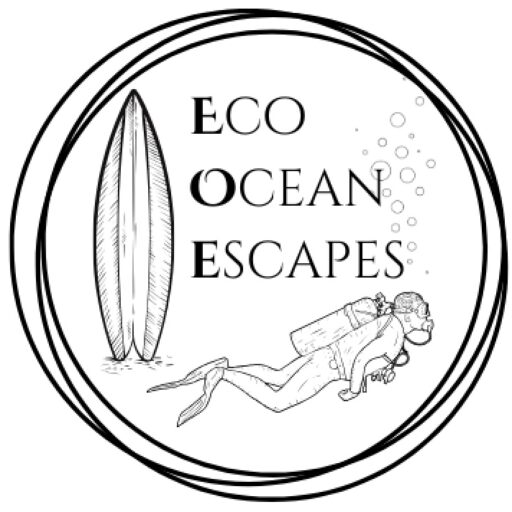
PLAN YOUR TRIP WITH OUR FAVOURITE RESOURCES:
Find hotels and resorts via Booking or Agoda
Book tours and experiences via Viator or GetYourGuide
Find a rental car via Discover Cars
Book flights via Kiwi or Booking
Search for buses and trains via 12Go or Omio
Get travel insurance via SafetyWing
Buy a digital eSIM with Airalo
By purchasing through our links, you’ll be supporting our website at no additional cost to you
About the authors
We are a team of passionate divers and surfers with decades of combined experience in the water and travelling to all corners of the globe. After years of chasing waves and descending into the deep blue, we’ve created this resource to highlight sustainably run surf camps, eco-friendly dive resorts and conservation-focused ocean trips to help inspire your next adventure.
Eco Ocean Escapes was born out of a love of the ocean, an obsession with travel and a concern about the impacts of our adventures on the environments we explore. Despite the benefits that surf and dive tourism can bring to local communities, we recognised that ocean-based adventures are not always managed in a sustainable manner.
Through our articles, we hope to inspire those seeking a responsible surf or dive trip that is all about supporting local communities, preserving our coastal environments and the incredible marine species that inhabit our oceans.
-
Sustainable Surf Tourism and Respecting Local Communities
Surf tourism has exploded over the last two decades. With travel becoming more accessible and social media exposing hidden spots, once-remote breaks in Indonesia, Central America, Morocco and the Pacific Islands are now iconic stops on global surf circuits. While surf travel brings income, jobs and global attention to coastal towns, it can also disrupt…
-
Inspiring Citizen Science Projects for Surfers + How to Get Involved
As surfers, we are intimately connected to the ocean – its rhythms, its wildlife and its health. Because of this relationship, many of us are looking for meaningful ways to protect the marine environments we love. One of the simplest and most impactful ways we can do this is by joining citizen science projects. These…
-
Understanding Marine Protected Areas (MPAs): Why divers should care
If you’ve spent time underwater (as a diver or snorkeller), you’ve probably noticed something: not all sites are beacons of health. Some reefs appear vibrant and full of life, while others show signs of stress – broken coral, few fish or algae-covered rocks. One of the biggest factors shaping the health of our oceans is…
-
Costa Rica: Best Marine Parks for Scuba Divers + Eco Dive Resorts
Costa Rica is a paradise for eco-conscious travellers and underwater explorers are no exception. With its healthy coral reefs, pelagic-rich waters and some of the most progressive environmental policies in the world, the country is a dream destination for those who want to dive responsibly. We’ve been lucky enough to visit Costa Rica several times…
-
Eco-Diving: Best Destinations for Sustainable Scuba Travel
As humans inspired by the underwater world, there is plenty of incentive to protect our coral reefs. Here at EcoOceanEscapes, we want to do our bit to save endangered marine species and keep our oceans free of trash. One impactful action we can all take is to choose sustainable diving destinations. These are nations (or…
-
Eco-Friendly Diving: How to Be a Sustainable Scuba Advocate
Understand the environmental impacts of diving and sustainable scuba practices in this comprehensive guide to eco-friendly diving. Any diver will tell you that being underwater is an incredible experience. It’s a world that not everyone has the opportunity to explore and the encounters we have with marine creatures can be life-changing. Watching manta rays soar…

We are a team of passionate divers and surfers with decades of combined experience in the water and travelling to all corners of the globe.
After years of chasing waves and descending into the deep blue, we’ve created this resource to highlight sustainable surf camps, eco-dive resorts and conservation-focused ocean trips to help inspire your next adventure.
Eco Ocean Escapes was born out of a love of the ocean, an obsession with travel and a concern about the impacts of our adventures on the environments we explore.

